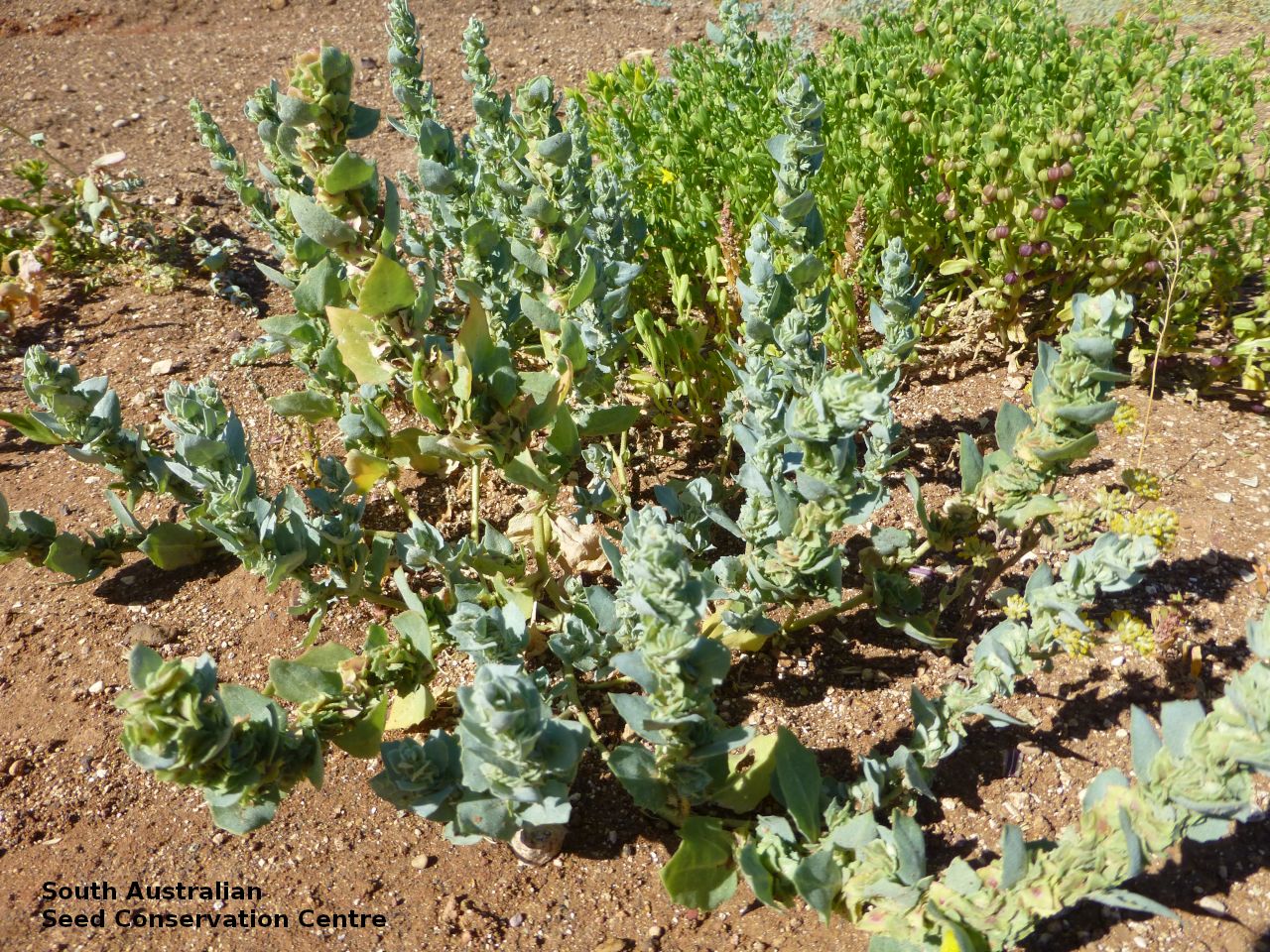
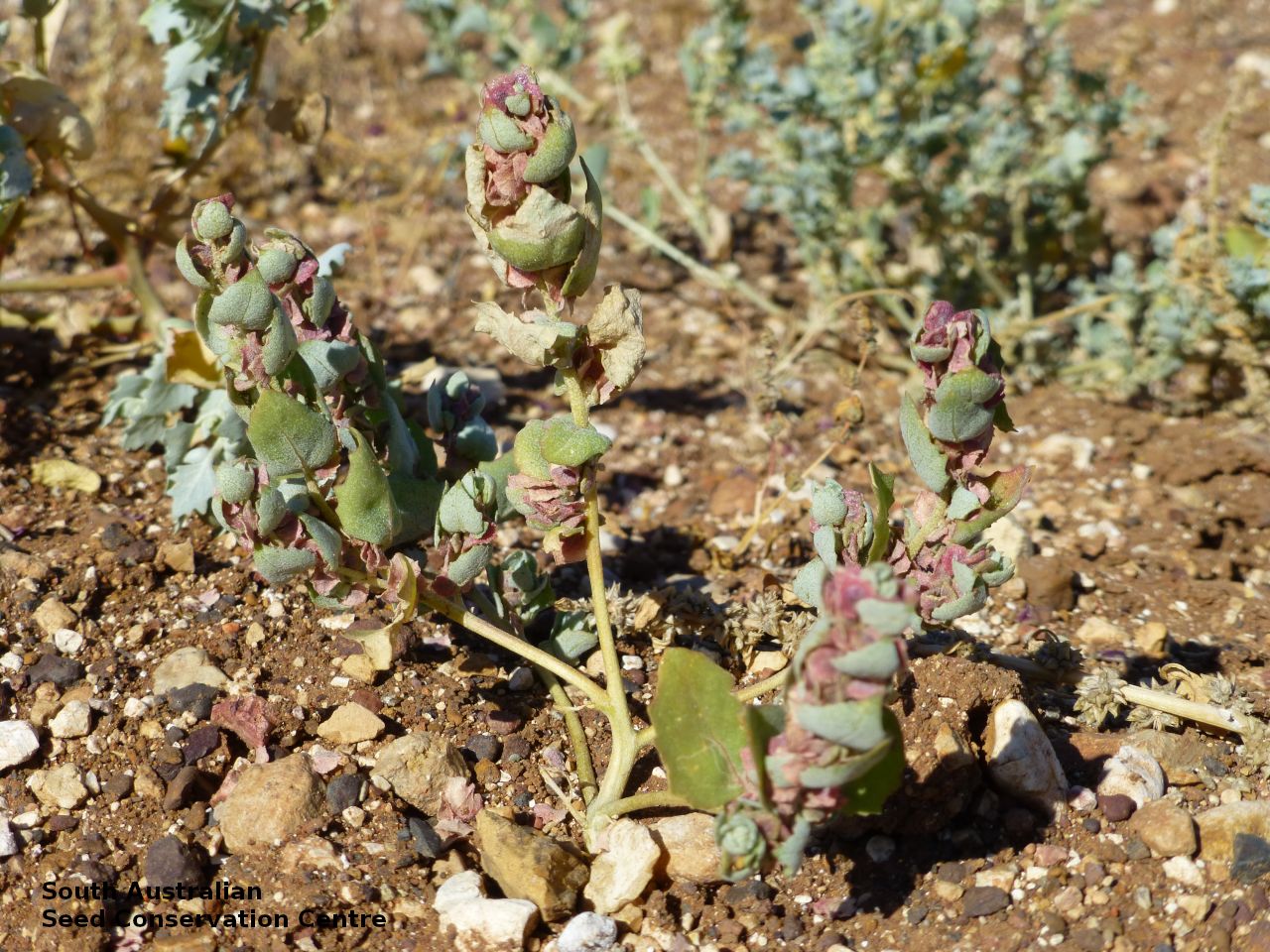
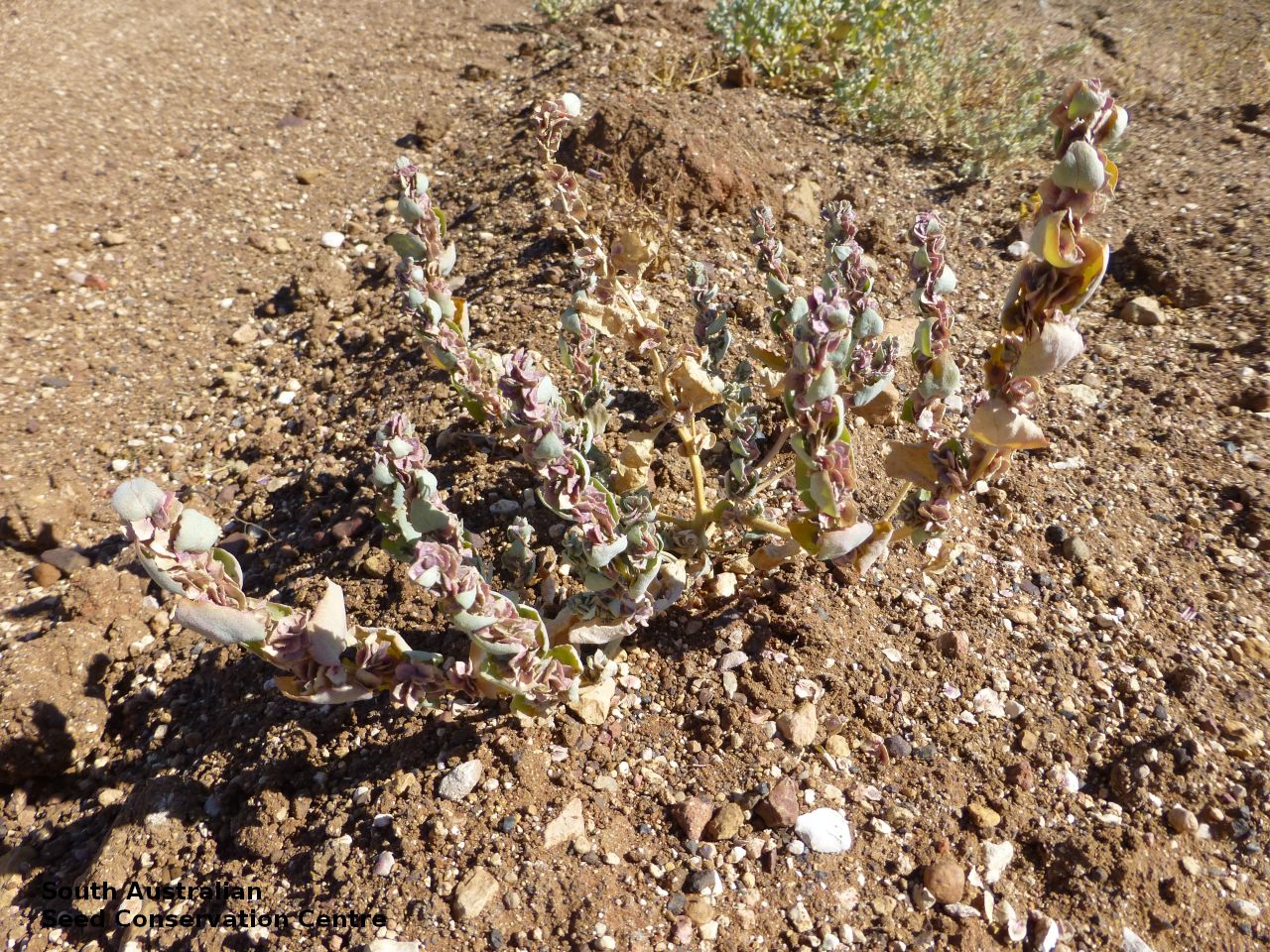
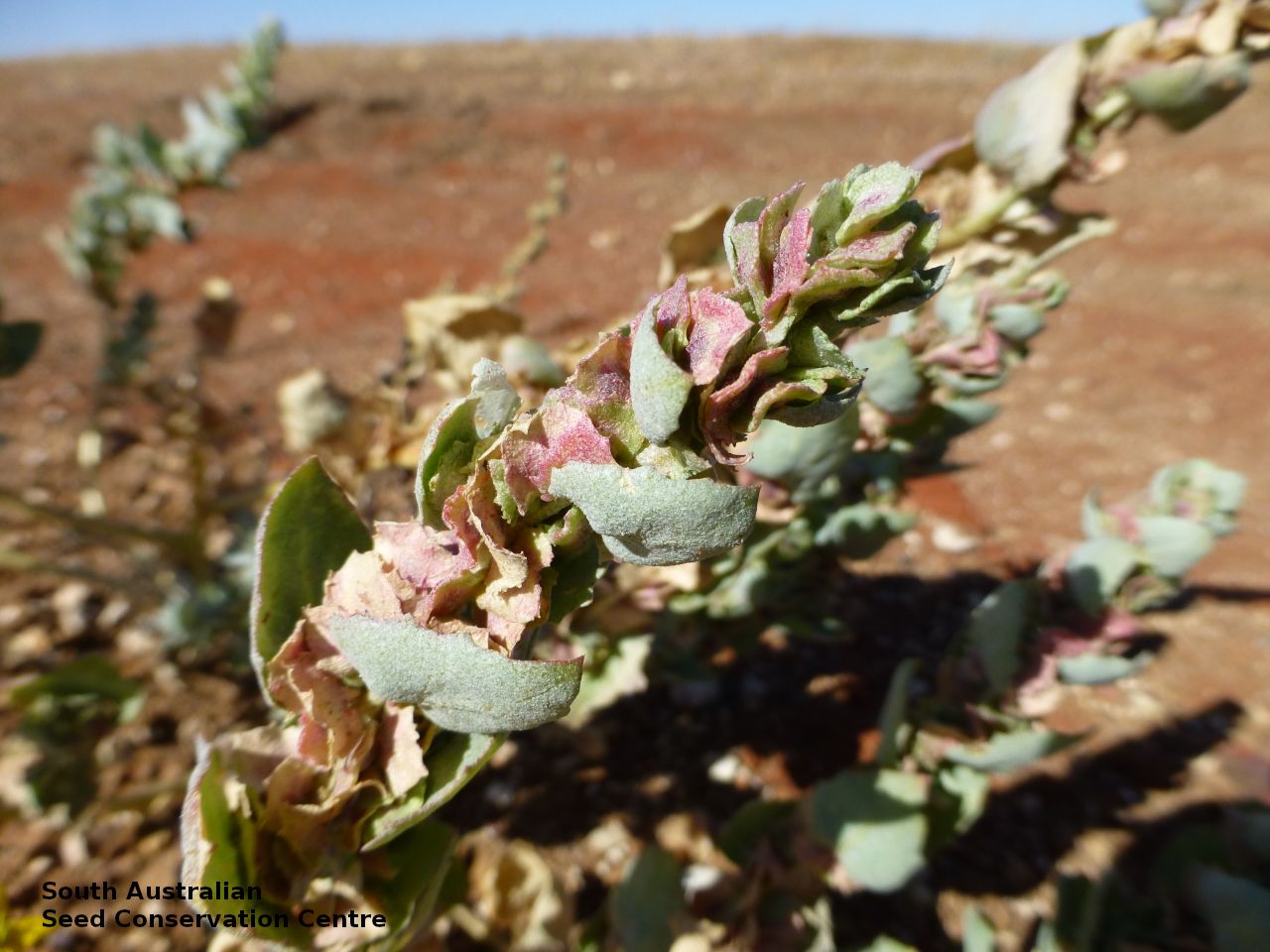
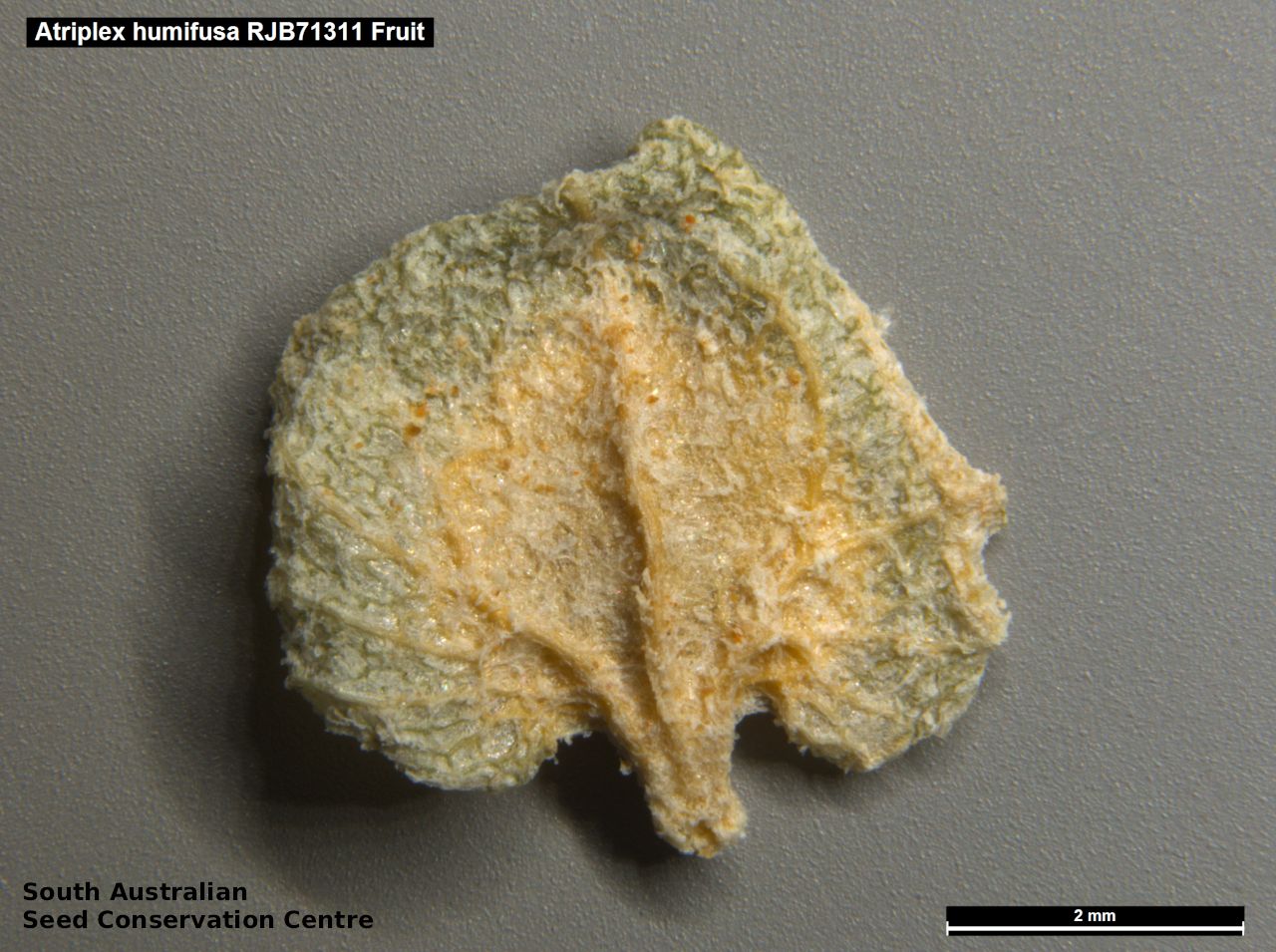
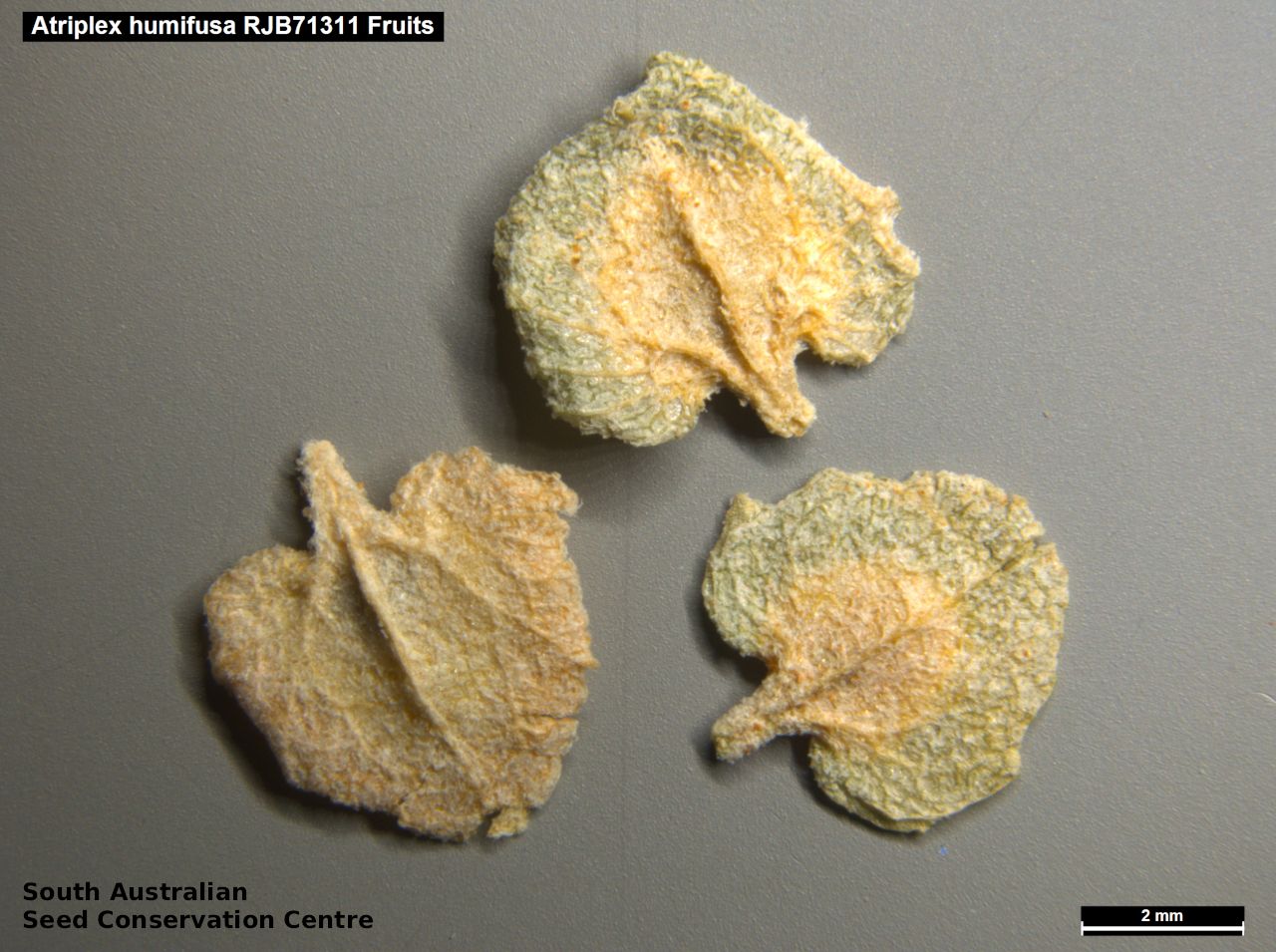
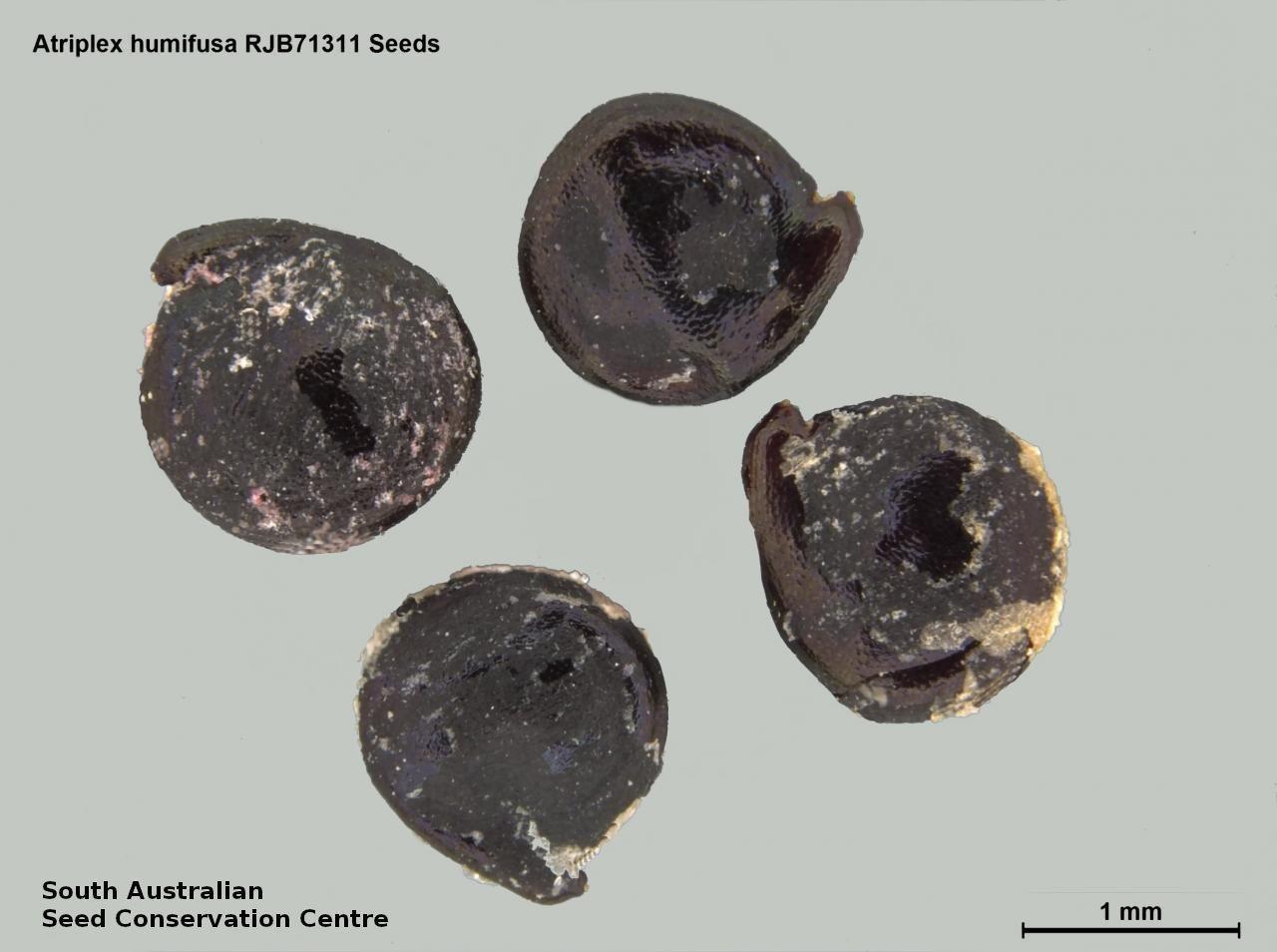
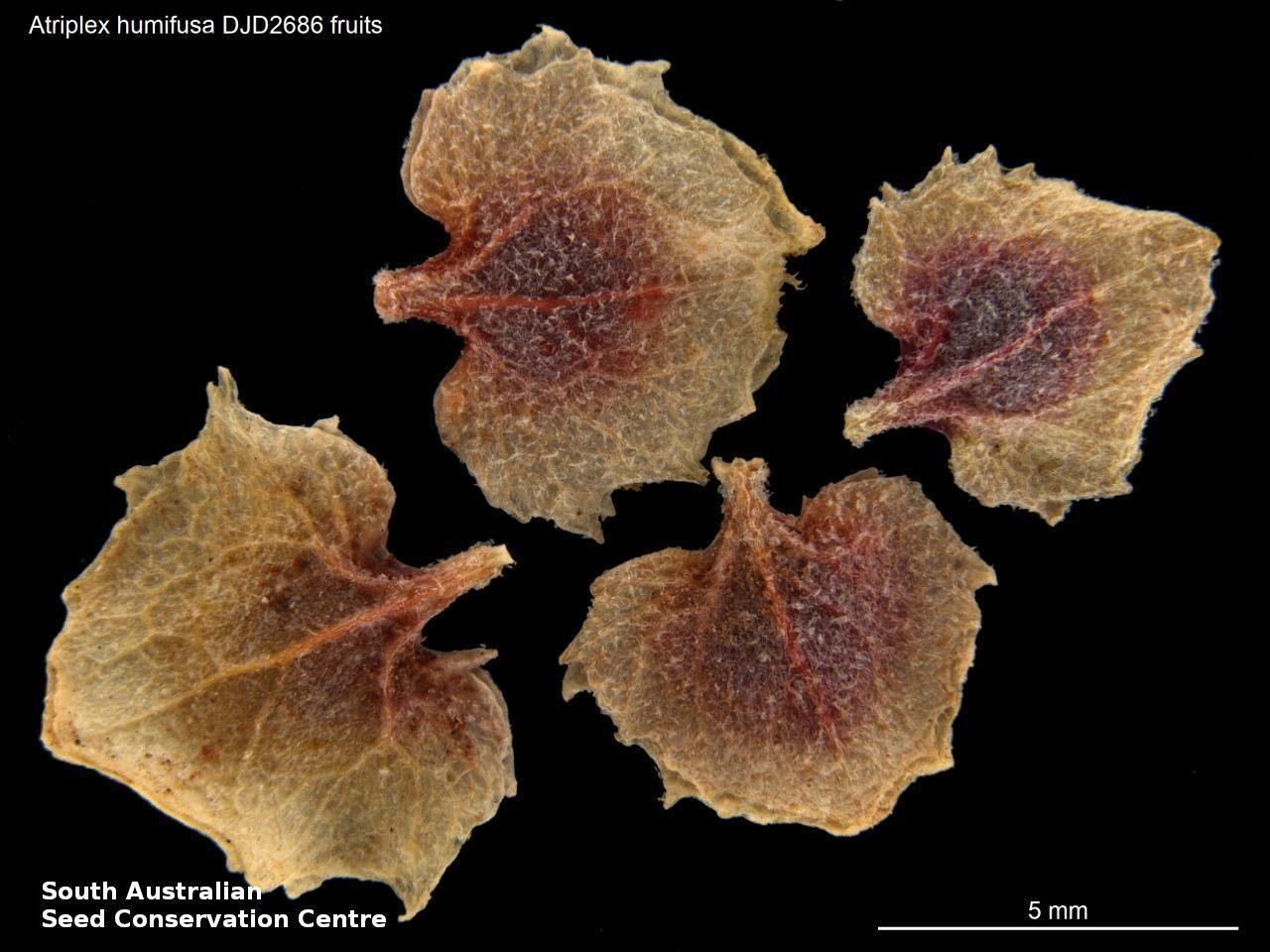


Etymology
Atriplex from the Latin 'atriplexum' meaning an orach, a saltbush, an Ancient Latin name for this plant. Humifusa from the Latin 'humus' meaning low- growing,alluding to its prostrate habit.
Distribution and status
Found in a few areas north-east of Copper Pedy in South Australia, growing in red clayey loam. Also found in Northern Territory and Queensland. Native. Rare in South Australia. Common in the other States.
Herbarium region: Lake Eyre
NRM region: South Australian Arid Lands
AVH map: SA distribution map (external link)
Plant description
Rounded annual or short-lived perennial shrub to 30 cm high. Leaves thin, subsessile or shortly petiolate; elliptic, ovate to obovate, to 30 mm long; apex obtuse to acute;, upper surface smooth, hairless and lower surface similar or scurfy. Male flowers in small glomerule to 3 mm diameter in axils or forming small spike. Female flowers in axillary clusters. Fruits are pink to red or pale brown, thin papery fruit to 5 mm long with a serrated edge. Seeds are smooth, dark red to black, globular reniform seed to 1.5 mm long and wide. Seed embryo type is peripheral.
Seed collection and propagation
Collect seeds between April and August. Collect fruits that are starting to turn pale brown, drying off and papery. Fruits can be collected directly from the bush or from the ground underneath. Place the fruits in a tray and leave to dry for one to two weeks. No cleaning is required if only the fruits are collected. The seed can be stored in the fruit or can be clean further. Rub the fruit gently by hand to dislodge the seeds. Use a sieve to separate the unwanted material. Store the seeds with a desiccant such as dried silica beads or dry rice, in an air tight container in a cool and dry place. From one collection, the seed viability was average, at 40%.
| Location | No. of seeds (weight grams) | Number of plants | Date collected | Collection number Collection location | Date stored | % Viability | Storage temperature |
|---|---|---|---|---|---|---|---|
| BGA MSB | 9,950 (45 g) 9,950 (45 g) | 3-Apr-2007 | RJB71311 Eastern | 1-Aug-2007 | 40% | +5°C, -18°C | |
| BGA MSB | 14,500 (55.29 g) 10,700 (40.8 g) | 3-Sep-2013 | DJD2686 Lake Eyre | 24-Mar-2015 | 95% | +5°C, -18°C |
Number of plants: This is the number of plants from which the seeds were collected.
Collection location: The Herbarium of South Australia's region name.
% Viability: Percentage of filled healthy seeds determined by a cut test or x-ray.